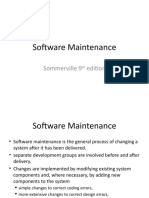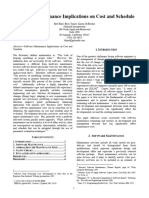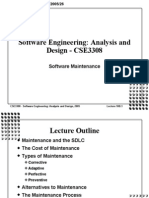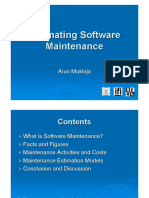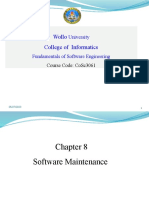0% found this document useful (0 votes)
9 views2 pagesSoftware Group Work
The document outlines key factors influencing maintenance costs in software systems, including module independence, programming language choice, programming style, verification and testing, and documentation quality. It emphasizes that well-documented and verified programs incur lower maintenance costs, particularly in error correction. Additionally, effective configuration management is highlighted as essential for tracking system documents and maintaining consistency.
Uploaded by
kipropisaac711Copyright
© © All Rights Reserved
We take content rights seriously. If you suspect this is your content, claim it here.
Available Formats
Download as DOCX, PDF, TXT or read online on Scribd
0% found this document useful (0 votes)
9 views2 pagesSoftware Group Work
The document outlines key factors influencing maintenance costs in software systems, including module independence, programming language choice, programming style, verification and testing, and documentation quality. It emphasizes that well-documented and verified programs incur lower maintenance costs, particularly in error correction. Additionally, effective configuration management is highlighted as essential for tracking system documents and maintaining consistency.
Uploaded by
kipropisaac711Copyright
© © All Rights Reserved
We take content rights seriously. If you suspect this is your content, claim it here.
Available Formats
Download as DOCX, PDF, TXT or read online on Scribd
/ 2




